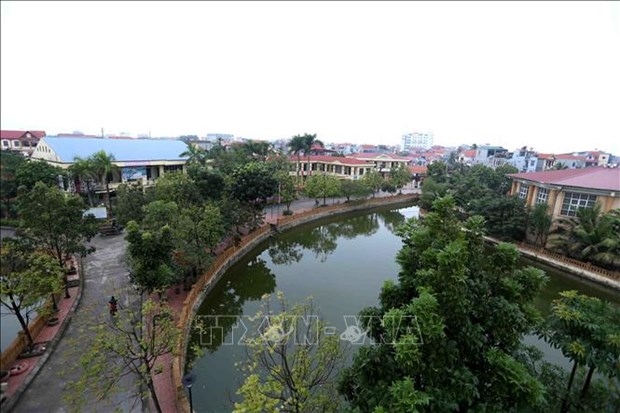Hanoi spends over US$2.4 billion on rural growth in five years
Hanoi spent over VND56.5 trillion (US$2.4 billion) on the development of agriculture, new-style rural areas, and farmers’ living standards between January 2016 and June 2020.
The information was reported at a working session on August 6 between a delegation led by Deputy Minister of Agriculture and Rural Development Tran Thanh Nam and the steering board for the Hanoi Party Committee’s Programme 2 on The information was reported at a working session on August 6 between a delegation led by Deputy Minister of Agriculture and Rural Development Tran Thanh Nam and the steering board for the Hanoi Party Committee’s Programme 2 on rural development for 2016-2020.
At the function, Chu Phu My, director of the municipal Department of Agriculture and Rural Development, said in spite of African swine fever and COVID-19, the city’s agro-forestry-fishery in the first half of 2020 grew 1.61% year-on-year.
According to him, Hanoi has so far carried out land allocation on 79,454 hectares. It is home to 164 high-tech farming models and 141 agricultural production connection models. As a result, local farmers are following more sustainable practices to turn out branded products and forming links with enterprises to ensure a stable distribution market.
Meanwhile, the city has six districts recognised as new-style rural areas, namely Dan Phuong, Dong Anh, Thanh Tri, Hoai Duc, Quoc Oai, and Gia Lam.
To date, local authorities recognised 355 out of its 382 communes (92.9%) as new-style rural areas, and 13 as advanced ones. Of the remainder, 24 communes have fulfilled between 15 and 18 of the criteria.
In 2020, Hanoi aims to have Son Tay town and six more districts meeting the criteria, while selecting Dan Phuong and Hong Van communes to propel toward becoming model new-style rural areas.
The national target programme on building new-styled rural areas was initiated by the Government in 2010 with the aim of developing rural regions. The list of criteria includes the development of infrastructure, the improvement of production capacity, environmental protection, and the promotion of cultural values.
At the meeting, Nam lauded such achievements, stressing that the goal of the national target programme is to improving people’s living standards.
He noted income gap remains between the city’s urban and rural districts, adding that measures to increase local income is important to Hanoi. for 2016-2020.
At the function, Chu Phu My, director of the municipal Department of Agriculture and Rural Development, said in spite of African swine fever and COVID-19, the city’s agro-forestry-fishery in the first half of 2020 grew 1.61% year-on-year.
According to him, Hanoi has so far carried out land allocation on 79,454 hectares. It is home to 164 high-tech farming models and 141 agricultural production connection models. As a result, local farmers are following more sustainable practices to turn out branded products and forming links with enterprises to ensure a stable distribution market.
Meanwhile, the city has six districts recognised as new-style rural areas, namely Dan Phuong, Dong Anh, Thanh Tri, Hoai Duc, Quoc Oai, and Gia Lam.
To date, local authorities recognised 355 out of its 382 communes (92.9%) as new-style rural areas, and 13 as advanced ones. Of the remainder, 24 communes have fulfilled between 15 and 18 of the criteria.
In 2020, Hanoi aims to have Son Tay town and six more districts meeting the criteria, while selecting Dan Phuong and Hong Van communes to propel toward becoming model new-style rural areas.
The national target programme on building new-styled rural areas was initiated by the Government in 2010 with the aim of developing rural regions. The list of criteria includes the development of infrastructure, the improvement of production capacity, environmental protection, and the promotion of cultural values.
At the meeting, Nam lauded such achievements, stressing that the goal of the national target programme is to improving people’s living standards.
He noted income gap remains between the city’s urban and rural districts, adding that measures to increase local income is important to Hanoi.

